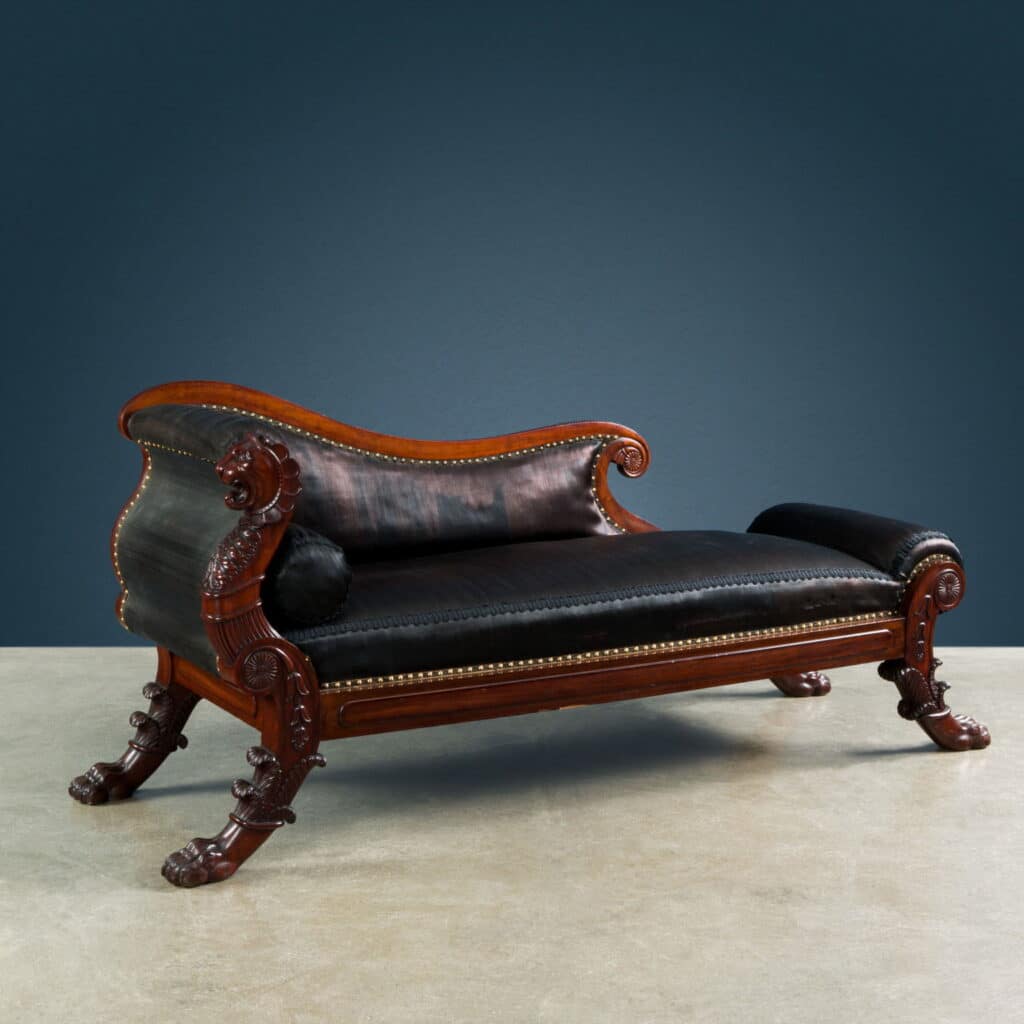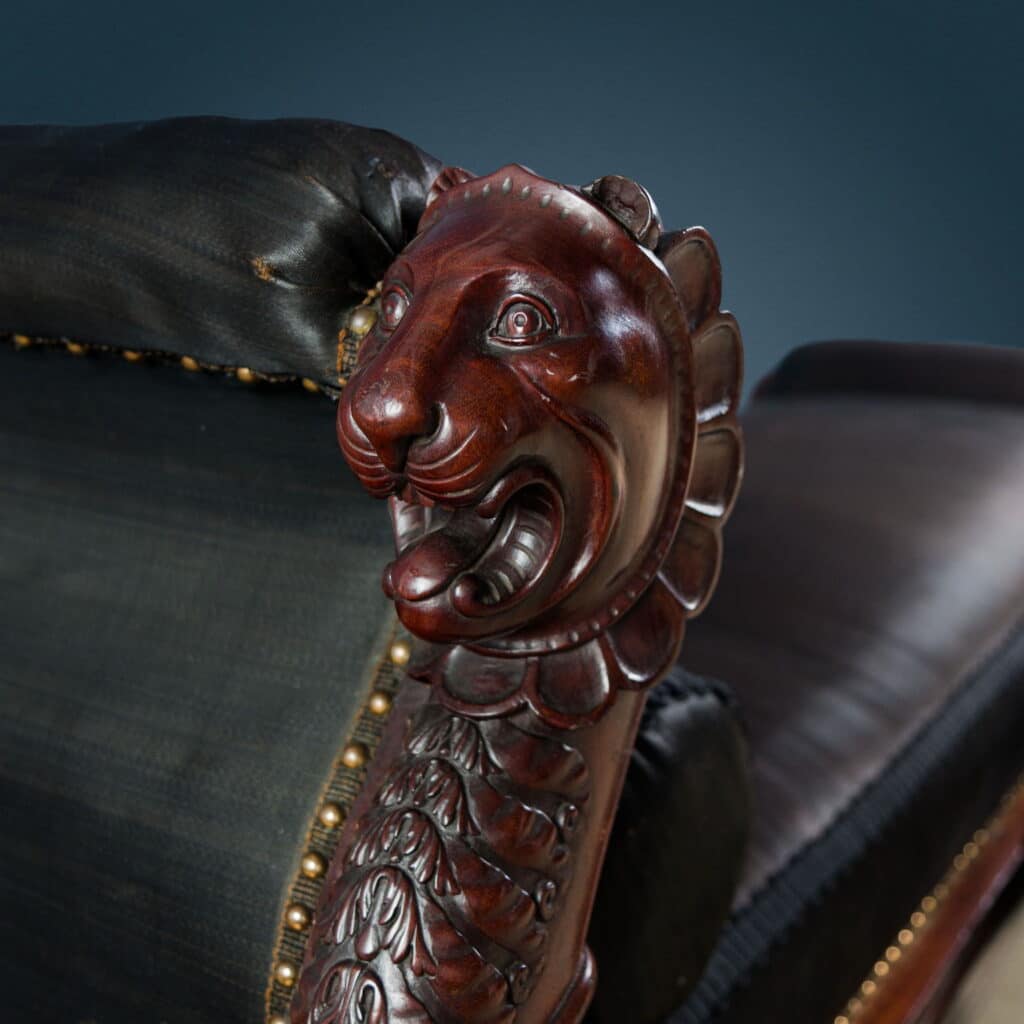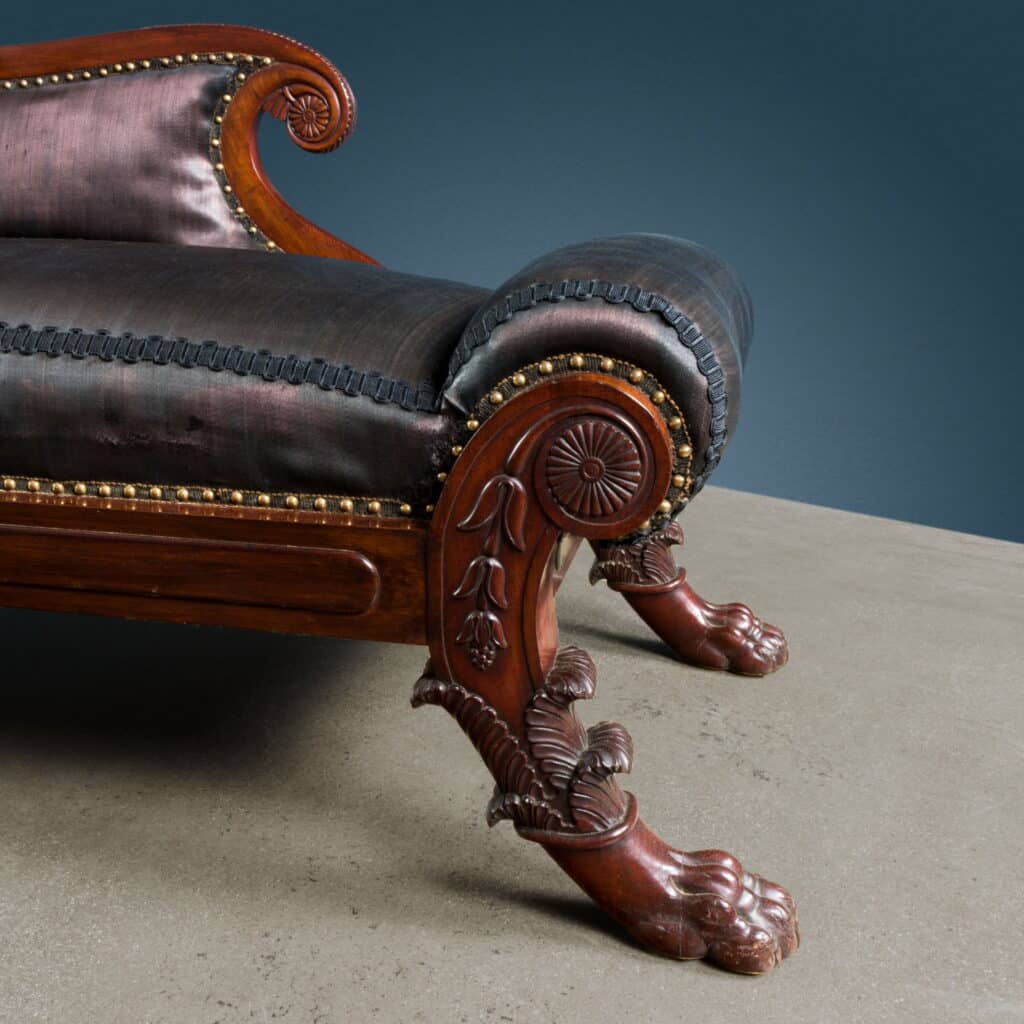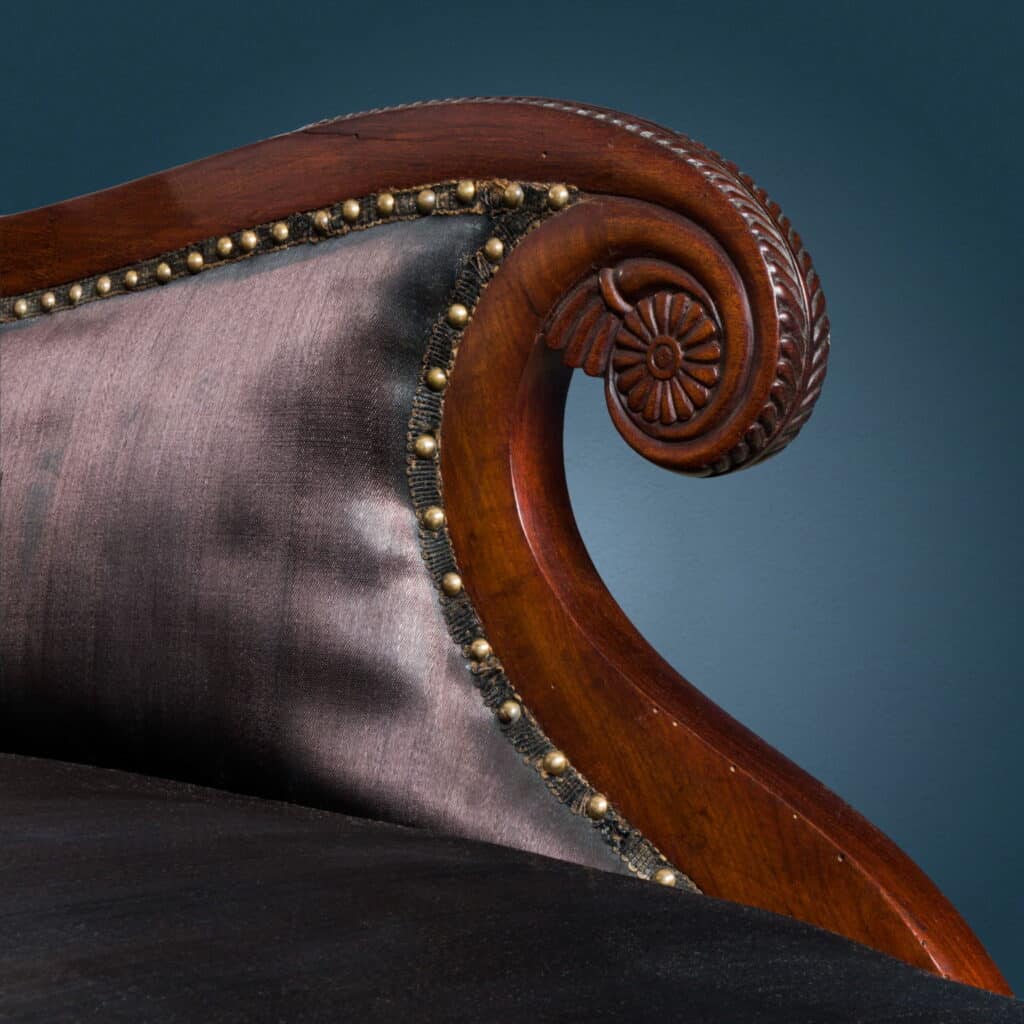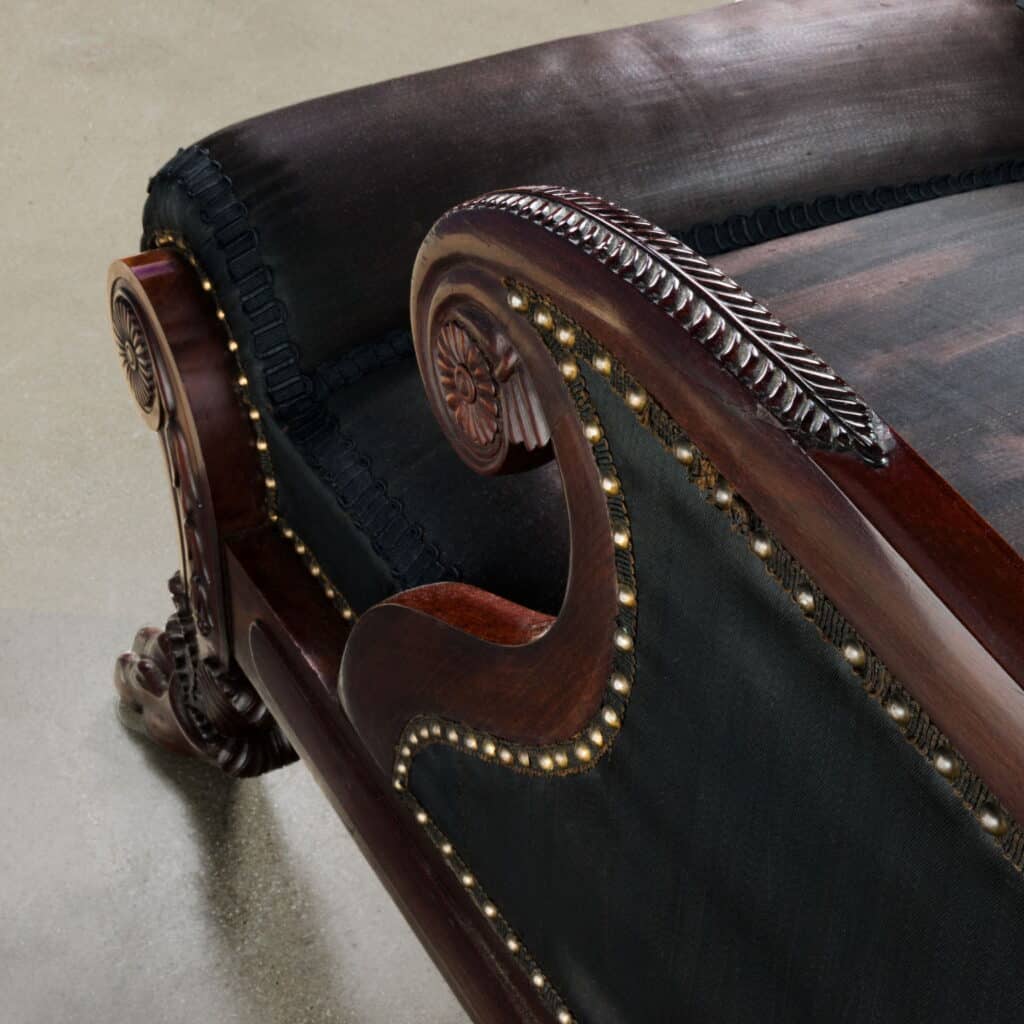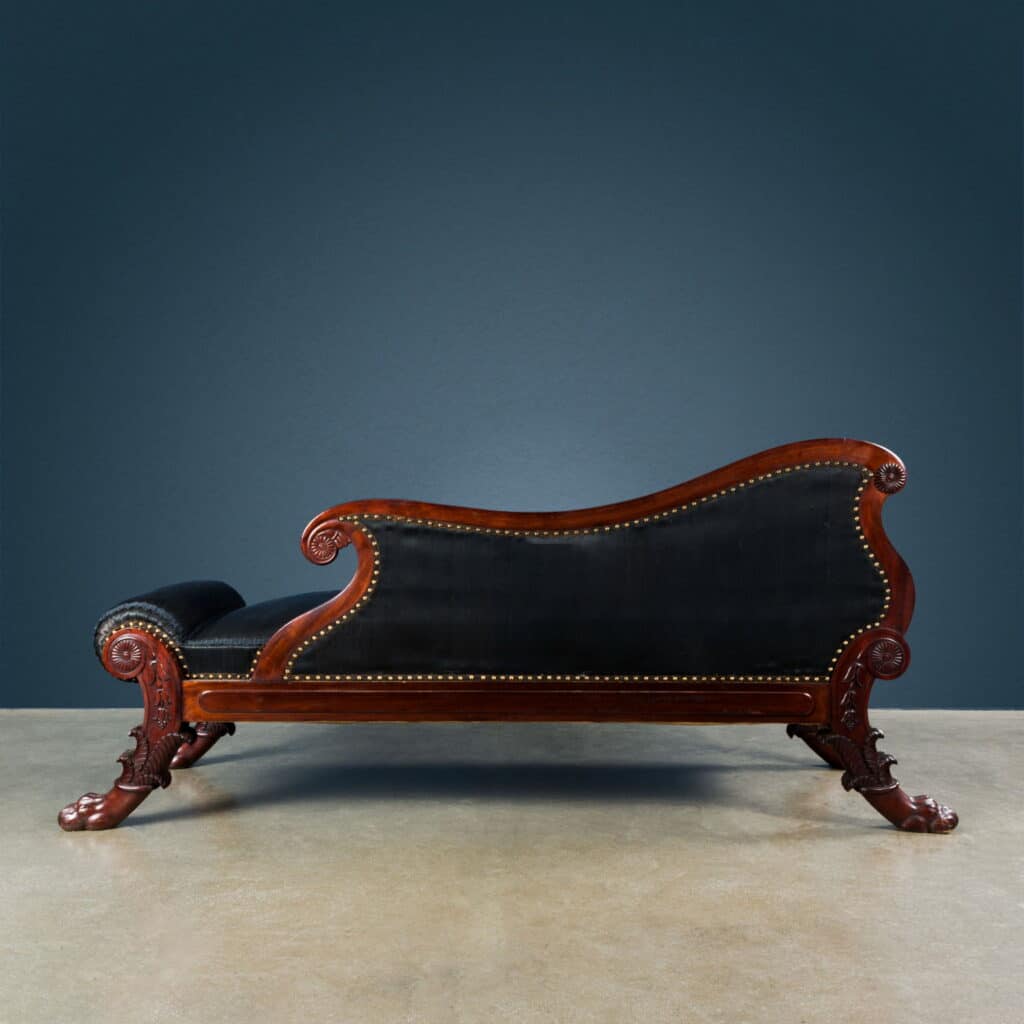Dormouse. Milan, around 1860
Description:
Center triclinium sofa, made of mahogany and upholstered in black horsehair fabric. The saber feet are carved in the shape of a lion’s paw wrapped in acanthus leaves from which emerges a volute decorated with rosettes and bellflowers; the front upright of the highest side develops into a lion protome with an acanthus leaf on the neck; the shaped reredos is also enriched by rosettes and has a refined fern carved on the curve of the curl; the bands have simple relief folders. Original horsehair padding with two cushions, one cylindrical.
Dimensions: 87 x 203 x 67 cm
CODE: ANSESE0180889
Historical-stylistic analysis:
The piece of furniture is made according to the typical taste of the second quarter of the 19th century, which in Lombardy sees an insistent persistence of classicism re-proposed in the models designed by Domenico Moglia which often develops into refined carvings made of mahogany according to an English-influenced taste. The Lombard furnishings of this period are usually attributed to Giuseppe Foresti being one of the most talented carvers of the period (in this regard see Enrico Colle 1998) but he was certainly not the only one.
However, a more in-depth technical analysis allowed us to distinguish the construction of the uprights from the composition of the sofa, better framing the period of construction. In fact, if the legs are a product of the fourth decade of the century, the rest seems to have been made some twenty years later. The characteristics that led us to this observation are two, the first is the fact that the bands and the backrest have carvings of a less refined hand than the legs and are decorated with a relief folder of evidently later taste than the uprights. The second aspect is that the padding is made with springs that have been around since the mid-century.
The constructive analysis, on the other hand, demonstrates that the piece of furniture was built and upholstered in the same period and that it has not undergone subsequent modifications. For this reason it is to be assumed that the sofa was made around 1860, using uprights from a previous era, probably leftovers from the workshop.
Comparison biography
- Enrico Colle, Empire furniture in Italy, ed. Electa 1998
- Dormouse. Milan, around 1860

Antiques, Art and Design
FineArt is the new ambitious Di Mano in Mano project that offers an exclusive choice of antiques and design works, presenting them for their singularity and uniqueness.

